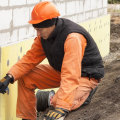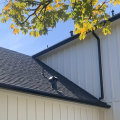The question of whether a cracked foundation can be fixed is one that concerns many homeowners and property managers, as the foundation is critical to the stability and safety of any structure. The short answer is yes, a cracked foundation can often be repaired, but the complexity and cost of the repair can vary widely depending on the severity of the damage, the cause of the crack, and the type of foundation. Foundation cracks can result from a variety of issues, including soil settlement, water damage, improper construction, and natural disasters. Each of these causes requires a different approach to repair, underscoring the importance of a thorough evaluation by a qualified professional before any repair work begins.
Repair methods range from simple epoxy or polyurethane foam injections for minor cracks to more extensive underpinning or piering techniques for foundations that have experienced significant movement or settling. Epoxy and polyurethane injections can seal cracks and prevent water intrusion, effectively addressing minor issues without the need for extensive repairs. However, for more serious problems, underpinning — the process of extending the foundation to more stable soil or bedrock — may be necessary to ensure the long-term stability of the structure. Similarly, piering involves driving steel pipe pilings to remedy and support foundations that have shifted.
The decision on which repair method to use should be based on the specific circumstances of the crack and the overall condition of the foundation. This is where the expertise of structural engineers and foundation repair specialists becomes invaluable. These professionals can assess the damage, determine the underlying cause of the crack, and recommend the most effective repair strategy. It's also crucial for homeowners to address any environmental issues that may have contributed to the foundation damage, such as poor drainage or tree roots, to prevent future problems.
According to general contractor magazines, staying informed about the latest advances in foundation repair technology and techniques is crucial for professionals in the construction and repair industry. These publications often feature articles on innovative repair methods, case studies on challenging repair projects, and advice from industry experts on best practices for foundation repair. For example, a recent feature might discuss the use of carbon fiber strips to reinforce cracked foundations, a method that has gained popularity due to its strength, durability, and minimal aesthetic impact. Such articles provide valuable insights for contractors, engineers, and homeowners alike, highlighting new solutions and technologies that can make foundation repairs more effective and less intrusive.
General contractor magazines also emphasize the importance of choosing the right contractor for foundation repair projects. The success of a repair depends not only on the chosen method but also on the skill and experience of the contractor. Homeowners should seek out professionals who specialize in foundation repair and who have a solid track record of successfully fixing similar problems. It's also advisable to get multiple estimates and to check references and credentials before making a decision.







